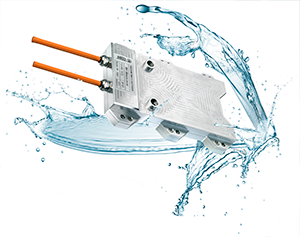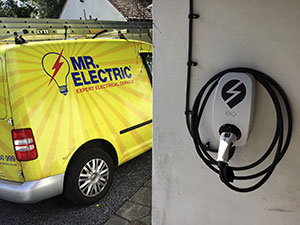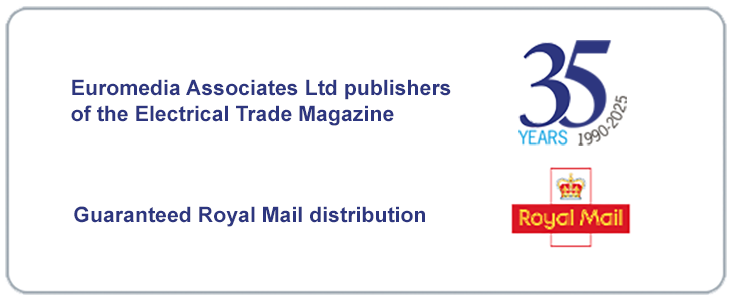Choosing between air and water cooling resistors

With rising ambitions to meet sustainability targets, the International Energy Agency (IEA) aims to have 220 million electric vehicles(EVs) on the road by 2030, EVs are fuelled by battery power and overheating must be avoided to ensure reliable and efficient operation, Here, Steve Hughes, managing director of specialist electrical components manufacturer REO UK, explains the difference between air and water cooling braking resistors. The effects of temperature on a product’s performance has always been an important design consideration. Overheating can reduce efficiency and the lifespan of components. So, whether a product is subjected to environmental heating or cooling, or if it generates its own rise or drop in temperature, managing temperature is critical. At REO UK, many of our customers are in the marine, renewable and railway sectors, all of which must operate in extreme environmental conditions where standard electrical items are not always fit for purpose. From our experience, many of the challenges components face in these sectors, like temperature, are also applicable to automotive manufacturers. Most manufacturers understand the importance of effectively addressing and understanding heat transfer considerations early in the design process, saving time and minimise prototyping costs. Despite this, many original equipment manufacturers (OEMs) are unsure how to choose between the two main ways of regulating device temperature: air-cooling and water-cooling. Braking resistors are used to dissipate heat and slow down a mechanical system to avoid overheating. Brake resistors have relatively low ohmic values, a high-power rating and are typically encased in a frame to create a safe distance between surrounding components. To increase its dissipation capability, the resistor’s frames feature cooling fans or liquid coolants. Traditionally, air cooling has been most commonly used as it is relatively inexpensive and require little maintenance, other than the replacement of filters. This is because the fan technology is robust and able to undertake some degree of damage without impacting performance significantly. For example, if a single fin broke on the fan it would remain functional and safe to use. Air-cooling, however, does come with its limitations. Firstly, the integration of a fan means that the enclosures of the device generally must be bulkier to accommodate it. This means that air-cooling cannot be used in applications where space is limited. Air fans also create an additional source of noise, unlike water-cooling alternatives like the REO braking resistor D 330. Suitable for integration in EVs, the resistor works by converting excess electricity that is not needed for recharging the EVs battery into heat that can be dissipated safely or as energy that can be regenerated into the vehicle’s power supply. This is an effective use of energy that would otherwise simply be lost. It also reduces the need for resistance heating using the battery’s energy, which can reduce the vehicle’s driving range. The benefit of using a water-cooling resistor in an application like this, is that they can be easily integrated into the existing cooling systems of the vehicle and are able to deliver cooling on the areas where fans often fall short. Water-based systems operate on a very simple principle of heat exchange whereby pipes containing a liquid coolant circulate around an enclosure and out of the device to keep components cool. The excess heat generated during use is thermally conducted by the water in the pipes, which can then be transferred out of the device and regenerated for other processes. With EVs, automotive manufacturers aim to make driving as energy efficient as possible. Not only are fans in air-cooling systems limited by their reliance on ambient temperatures to cool down overheating components but depending on the size of the application, OEMs may need to integrate multiple fans as opposed to just one. In comparison, water has a high heat conductivity and only requires a single pump to cool infrastructure, significantly lowering the overall energy consumption and cost of the cooling system. Another advantage is that coolant can be stored in the pipes below the application’s ambient level for even faster cooling. Water cooling is the only method that permits cooling below the ambient air temperature and is ideally suited to industrial applications. In addition to maximising efficiency, resistors like our REOHM series D 330 make an additional space saving of up to 88 per cent. The use of a water cooling system allows optimal temperature characteristics to be achieved, while the performance of the component is improved. The adoption of electric vehicles is only set to increase in the coming years and automotive manufacturers must be able to select the right components, like resistors, and technologies for their design. By considering the factors that affect equipment performance, engineers and OEMs can ensure they make the right choice between air-cooling and water-cooling every time. For more information about components for electric vehicles, visit the REO UK website and download the electric vehicle power whitepaper.
Electric vehicles brings lifestyle change to Birmingham CEO

With two electric vehicles (EVs) and more planned for his business in Birmingham, Ben Allan, CEO of Miso, is a recent convert of green technology and has totally changed the way he plans his working day to ensure he always has enough charge in his car. Interested in the concept of EVs and lured by the large tax breaks available from the Government, Allan took the plunge and bought two new electric vehicles – a Tesla Model X, as his company car, and a Hyundai Ioniq as the family car. The charging speed for the cars was initially slow and lengthy as it was only 3kW from a three pin-plug, so Allan applied for an OLEV (Office for Low Emission Vehicles) Grant, also known as the Electric Vehicle Homecharge Scheme (EVHS), so he would be eligible to receive up to £500 off the cost of purchasing and installing a home charging point. Allan contacted three OLEV accredited EV charging installers in the local Birmingham area to install two electric vehicle chargers at his home. Mr. Electric® was one of the Government approved electrical business’s who was approached and consequently won the work due to its exceptional customer service. Mr. Electric took over the grant application for its customer and recommended the installation of two EO Charging home chargers. Designed, manufactured and tested in the UK, the EO home charger was the ideal charging solution as it was simple, affordable, wall mounted and suitable for charging all types of EVs. Another key functionality was the speed and ease of charging – with a power rating of 7.2kW, the chargers had a charge time of three hours. “I was so impressed with Mr. Electric from the outset and the fact that we have asked them to possibly install car charging points at my company is testament to the work they have already done”, added Ben Allan. “The team provided a quality service from beginning to end and continue to show their high levels of professionalism and expertise in the EV market. They have done everything from the initial site survey to understanding my requirements and then the installation at home. “Driving the Tesla is undoubtedly fun and hugely enjoyable, particularly now that I can charge it easily and quickly at home. I plan my days around the car by setting off earlier to meetings if I know that I have to stop and charge mid journey – in just 30 minutes I can be fully charged, respond to emails and be on top of my work. Although many people are daunted by the high prices of electric cars, plus the limited mileage range, and where they can recharge their vehicles, this hasn’t been the case at all for me. Undoubtedly, the real advantage for me lies in the running costs – with big savings on fuel costs, servicing and car parking – and the charging, which has been seamless thanks to Mr. Electric and their expertise.” Dominic Longley, Director of Mr. Electric Birmingham North believes we have a corporate social responsibility towards the environment and fully supports the growing demand for sustainable green transport technology. “It is great to see so many of our customers embracing these emerging technologies both at home and in the workplace. We are continuing to build our relationship with Ben and hope to install EV charging points at this workplace so his employees can also reap the benefits. Electric vehicles are becoming increasingly popular as both consumers and businesses are looking for new ways to reduce rising fuel bills, and as a result, the demand for electric vehicle charging points is also on the rise.” Mr. Electric is now an approved installer and trusted partner for EO Charging, which has a comprehensive product range designed and built to be flexible and compatible with all leading motor manufacturers’ EVs. Together the two organisations will now be able to offer domestic and commercial customers a one-stop solution for all types and modes of EV charging, from the product right through to the installation and ongoing maintenance of the charging point. For further information about Mr. Electric and the services it can offer, visit https://www.mr-electric.co.uk/birmingham-north or call 0121 285 0136. For further information about EO Charging and its EV charging product range, visit www.eocharging.com.




